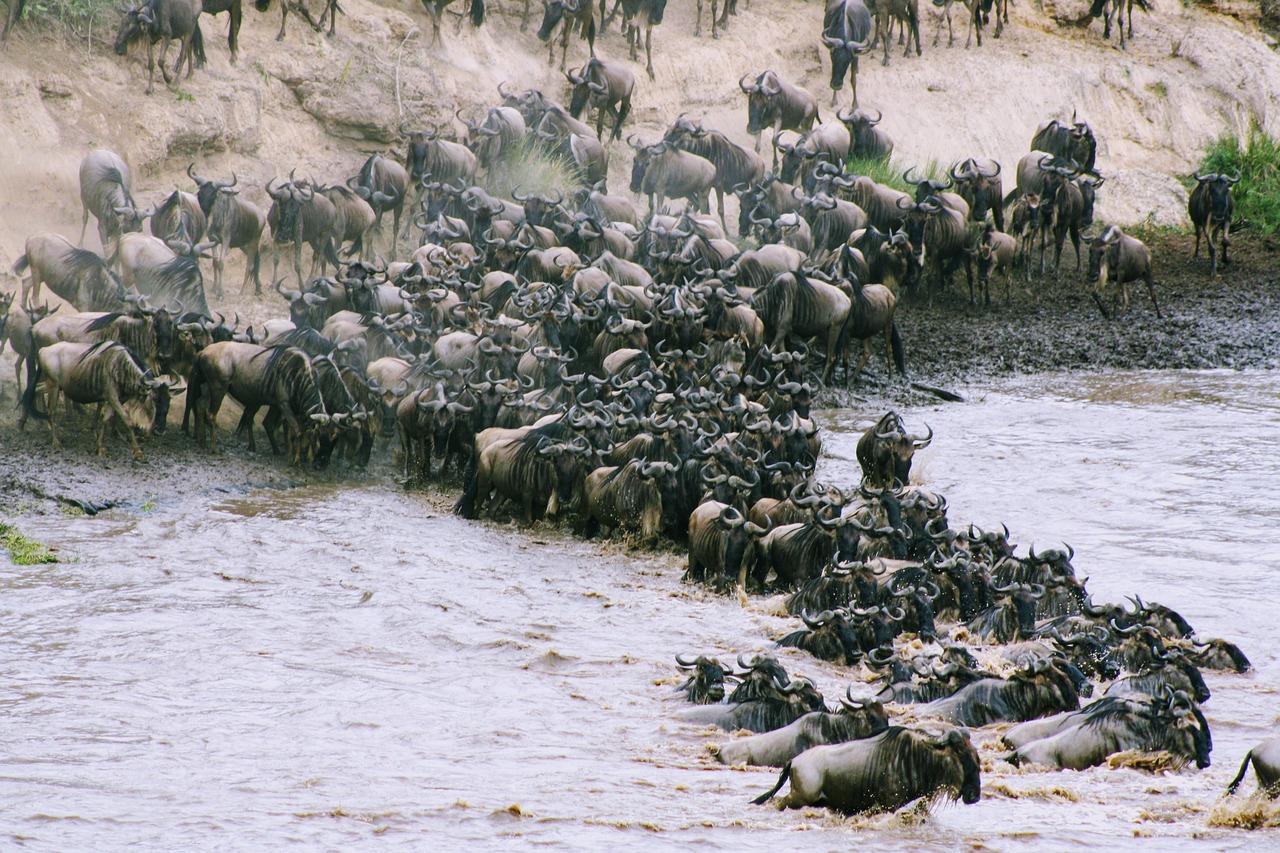

Serengeti National Park
Serengeti National Park is one of the most iconic wildlife reserves in the world, renowned for its vast plains, teeming wildlife, and unparalleled natural beauty. Located in northern Tanzania, the park spans approximately 14,750 square kilometers and forms part of the larger Serengeti ecosystem that extends into Kenya. It is especially famous for hosting the Great Migration, one of the most magnificent natural events on the planet.
Top Attractions:
- The Great Migration: Witness millions of wildebeest, zebras, and gazelles as they traverse the park in search of fresh grazing, pursued by predators such as lions and crocodiles.
- Big Five Game Viewing: Serengeti is home to elephants, lions, leopards, buffalos, and rhinos, offering a complete safari experience.
- Seronera Valley: Known for its high concentration of wildlife, particularly big cats.
- Grumeti River: A prime location for viewing the dramatic river crossings during the migration season.
- Hot Air Balloon Safaris: Experience breathtaking views of the park from above during a sunrise hot air balloon ride.
- Olduvai Gorge: An archaeological site on the outskirts of the park that provides insights into early human evolution.
Getting There:
- By Air: The fastest way to reach Serengeti is by taking a domestic flight from Arusha to one of the park’s airstrips such as Seronera, Kogatende, or Grumeti. Regular flights are available from Kilimanjaro International Airport and Arusha Airport.
- By Road: Travelers can reach the park by car from Arusha, which is approximately 325 km away. This journey typically takes about 6-8 hours and passes through other attractions like Lake Manyara and Ngorongoro Conservation Area.
- By Train: Though not a common method, railway plans in the region could potentially connect travelers to points closer to the park in the future.
Climate:
- Dry Season (June to October): Characterized by sunny days and cool nights, this is the best time for wildlife viewing as animals gather around water sources.
- Wet Season (November to May): Divided into the short rains (November to December) and the long rains (March to May). The park is lush and green, with ample wildlife activity, particularly calving season from January to March. Rain showers are more frequent in the long rains but typically occur in the late afternoon or evening.
- Temperature: The average temperature ranges between 15°C (59°F) at night and 26°C (79°F) during the day.
Visiting Serengeti offers a once-in-a-lifetime opportunity to immerse yourself in the heart of one of the world’s greatest wildlife spectacles and experience the untamed beauty of Tanzania’s natural heritage.
